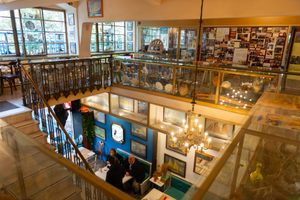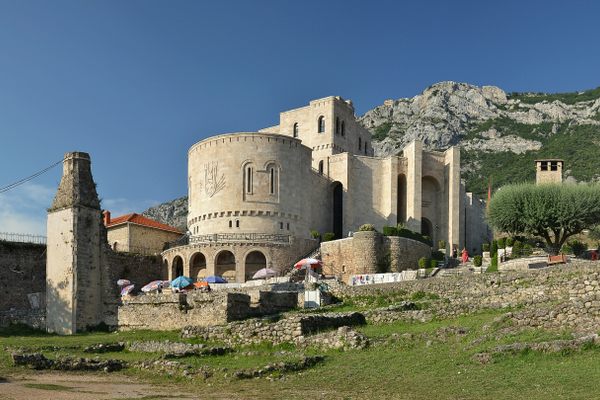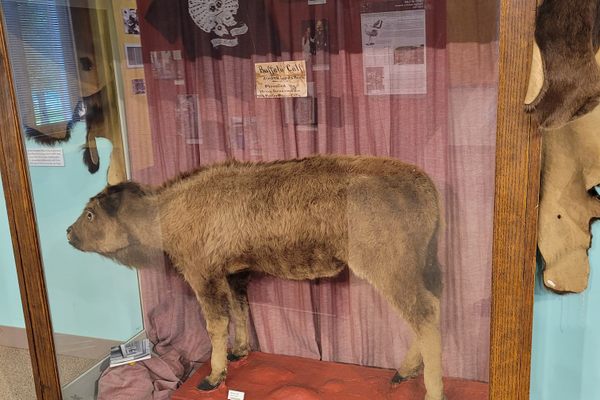About
Upon the Ottoman conquest of Athens, the Sultan decided to allow the city to be multi-ethnic, issuing an edict to protect and repurpose most temples and monuments for public use. This edict was in effect during the duration of the regime’s occupation.
In 1759, the Ottoman governor of Athens, Mustapha Agha Tzistarakis, ordered the building of a mosque in Monastiraki Square. In violation of the Sultan's edict, Tzistarakis destroyed one of the pillars of an ancient Greek temple (either the Temple of Olympian Zeus or Hadrian's Library) to make lime for the building.
Local superstition at the time was that the destruction of temples brought epidemics in its wake. Therefore, once the locals discovered that the mosque was made from a destroyed temple piece, they became so infuriated that the Sultan banished Tzistarakis from Athens to appease them. That banishment apparently was not enough, as Tzistarakis was later assassinated.
The square two-story building was capped with a hemispherical dome sitting on an octagonal base, roofed with ceramic tile. The interior was originally floor to dome, but is now two levels. On the western side of the building, there is an open portico with three arches with three small domes. Above the door, the founder's put an inscription, which is still visible.
The building served as a mosque until the start of the Greek War of Independence, when it was used as a meeting hall for elders. Upon independence from the Ottomans, the Greek government requisitioned the building and used it in a variety of ways over the years, including as a prison, barracks, warehouse, and venue for military concerts and events. Sometime between 1839 and 1843, the building’s minaret was destroyed.
In 1915, the building went through a renovation and opened in 1918 as first the Museum of Greek Handcrafts. A small addition of offices on the ground level was added in 1920 and in 1923 it was renamed the Museum of Decorative Arts. In 1966, the building was temporarily refurbished to provide a place of prayer for King Saud of Saudi Arabia during his visit to Athens. In 1975 it was converted to an annex of the Museum of Greek Folk Art and still operates as such. In 1981, the building was damaged by an earthquake and was re-opened to the public in 1991. During the earthquake restoration work, additional museum exhibition space was created.
Related Tags
Know Before You Go
The building is directly across from the Monastiraki metro station. The area is generally safe but street crimes such as petty theft are not uncommon.
Published
September 12, 2019































